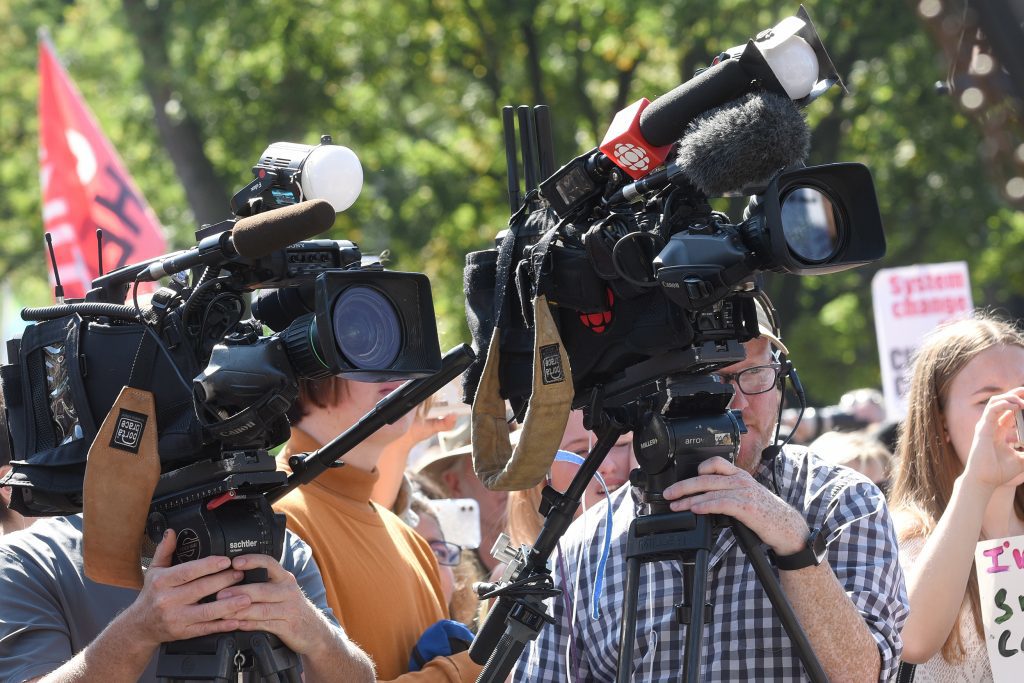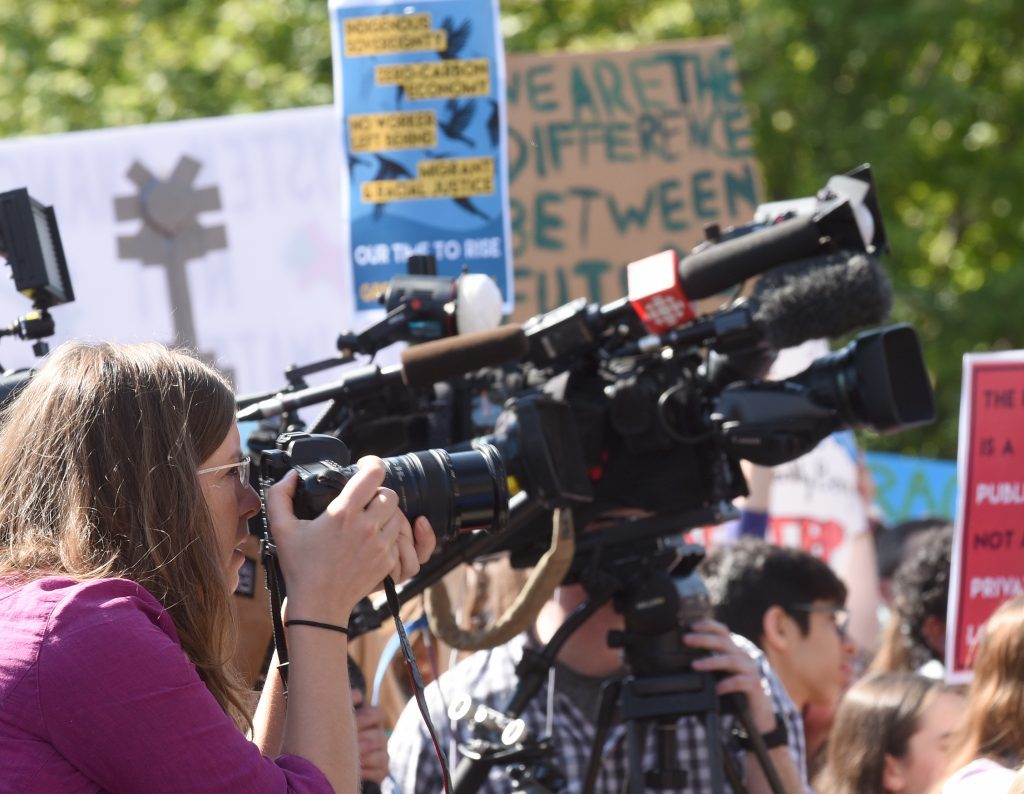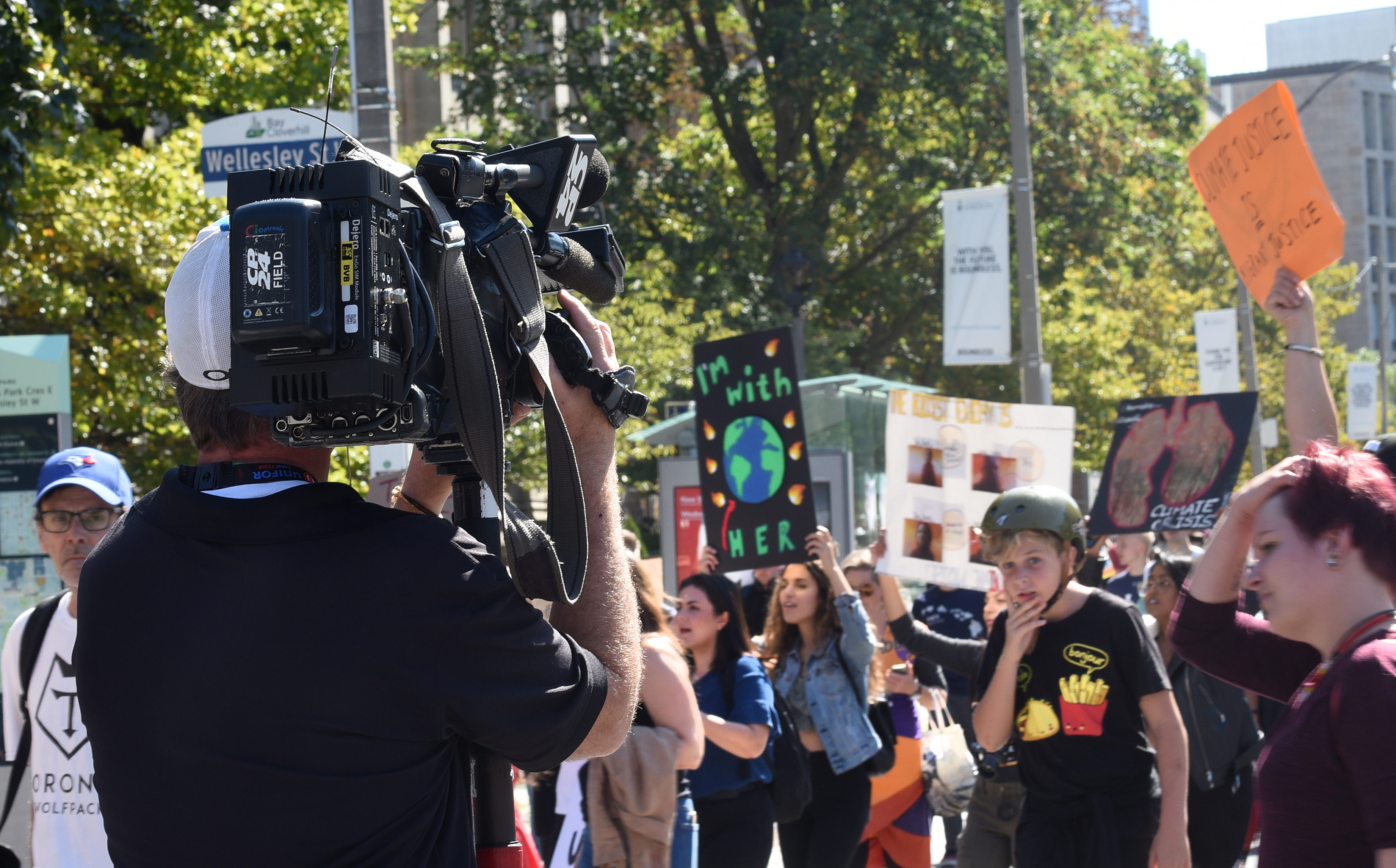This week – in an open letter – more than 11,000 scientists from 153 countries signed in agreement of a declaration of a global climate emergency. On November 5, the journal BioScience published six steps that policymakers, the private sector, and the public need to take to reduce the effects of climate change. Nearly four hundred of those signatures came from Canadian scientists.
“We declare, with more than 11,000 scientist signatories from around the world, clearly and unequivocally that planet Earth is facing a climate emergency,” the letter reads.
Just over a month earlier, on September 27, 85 climate strikes occurred across the country, in addition to hundreds around the world. On that warm day, as people gathered in downtown Toronto, the sun reflected off of media vans parked at the northeast corner of Queen’s Park, away from the growing crowd. On a grassy strip nearby, chants boomed among a sea of colourful signs. Thousands of people descended upon the Ontario Legislative Building with a united demand: immediate climate action.

Journalists from CBC, Global News, CityNews, CTV, CP24, and other media organizations entered the crowd, ready to cover Toronto’s largest climate strike. Many of them acknowledged the difference between reporting on a climate strike and participating in one.
“When we’re on the field, we’re impartial, we’re neutral — just a vehicle of these people talking to us, telling us their story,” said Myriam Eddahia, a reporter for Radio-Canada. She was standing near a group of kids holding up drawings of the earth on fire and a sign with big lettering which reads “NO PLANET B!”
Kas Roussy, a CBC reporter who stood in the gated area behind the stage, told RRJ she tries to veer her interview discussions away from politicians’ actions or the federal election. Instead, she focuses on “people’s real feelings about climate change and what’s important to them.”
Many reporters refused to comment. One says, “When I’m in the field, my opinion doesn’t matter.”
Reactions and impartiality aside, the climate strikes were only one piece of a much larger story — a story that has remained untold for too long, according to Kyle Pope, the editor-in-chief of the Columbia Journalism Review.
In September Pope co-founded Covering Climate Now, a collaborative newsroom initiative that aims to provide focused coverage of the climate crisis in print, on air, and online. Over the course of one week, September 15 to 23, the Covering Climate Now initiative reported more than 3,600 original stories, according to a report emailed to the project’s partners. The stories came from 323 media outlets in 47 different countries, across six continents.
Pope says one of the major newsroom hesitations when covering climate change is journalists fearing they will be perceived as activists. This fear, he says, is unjustified.
Pope pointed to great moments in American journalism, such as exposing the Watergate scandal, the coverage of the civil rights movement, and reporting on the horrors of the segregated South.
“At the time, those [journalists] were considered ‘activists,’” Pope says. “Now we look back and say those reporters weren’t activists, they were just journalists. They were focusing on things that needed to be changed because they were wrong.”
But what do journalists do, when after stepping beyond the fear of activism, the facts are no longer enough? How do we inform those who reject information?

In 2017, researchers from Ohio State University conducted a study surveying 1,504 Americans. They showed the participants footage of natural disaster broadcasts like hurricanes, wildfires, blizzards, and flooding. According to the study, some segments emphasized the role of climate change and some did not. The research concluded climate change skeptics were often more doubtful after being told there is a correlation between the crisis and the disasters.
The study also found a link between climate change communication and previous findings about persuasive messaging to a skeptical audience. When people’s strongly held beliefs are contradicted, they may block out sources which oppose these views. The study concludes that this principle may apply to communication about climate change.
This research confirms that facts don’t always dismantle denial — rather, they can reinforce it.
“We can’t control how people consume this information. There’s nothing we could do other than be a little more thoughtful and creative with how we tell these stories,” Pope says. “The alternative is to say [facts] are not going to change people’s minds so let’s not report on them. That seems like a dumb approach and it flies in the face of what we’re supposed to be doing here.”
What we as journalists are supposed to be doing, Pope says, is telling the story that will define the next decade. That’s why mass coverage of climate change is important now more than ever.
In Canada, 23 publications participated in Covering Climate Now –17 magazines and digital news sites, including TVO and Maclean’s, and six newspapers. Of these six, four were student-run—The Eyeopener (Ryerson University), the Queen’s Journal (Queen’s University), The Avro Post (University of Guelph-Humber) and The Varsity (University of Toronto). Of Canada’s three national publications, The Toronto Star was the only to participate.
In May, the Toronto Star released a 16-part series on climate change in Canada called “Undeniable.” Irene Gentle, editor of the Star, wrote in the editor’s note: “Climate change in Canada is a fact of life.”
In the note, the Toronto Star took a stance on the importance of covering climate change.
“Their stories are all our stories. That’s the thing about climate change – we all share a planet. It’s undeniable,” Gentle wrote.
About the author
Mitchell Consky is the print production editor at the Ryerson Review of Journalism. He is currently studying for his master of journalism. He studied English and film at Wilfrid Laurier University, where he was the features editor of the student newspaper, The Cord. He was previously an associate producer intern at CBC’s The Fifth Estate.
